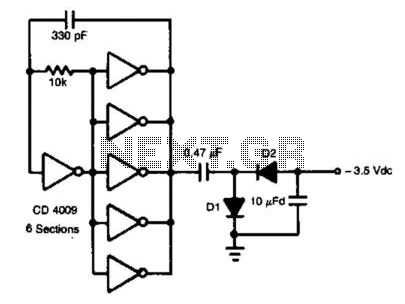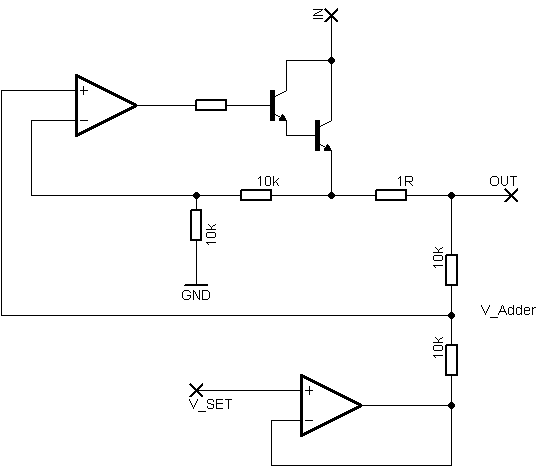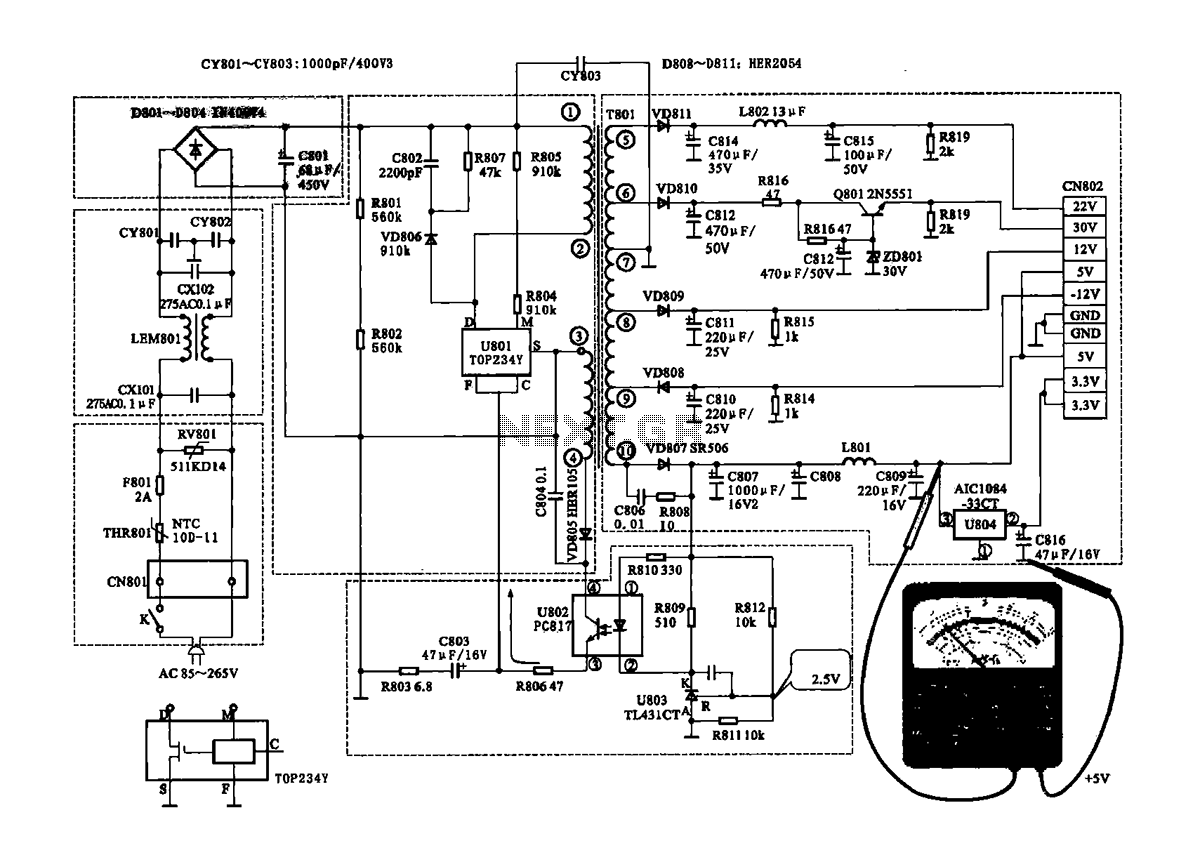
Auxiliary Negative Dc Supply

In this circuit, IC1 (CD4009) is utilized as a square-wave oscillator operating at approximately 25 kHz. Capacitor C1 and resistor R1 determine this frequency. Capacitors C2, diode D1, diode D2, and capacitor C3 create a peak-to-peak rectifier, which produces an output of about -3.5 Vdc. This circuit is advantageous in applications where a small negative DC supply is needed, but only positive DC voltages are available.
The circuit employs the CD4009 integrated circuit, which is a hex inverter capable of generating square-wave signals. The frequency of oscillation is dictated by the values of C1 and R1, which create an RC timing network. The oscillation frequency can be adjusted by changing the capacitance of C1 or the resistance of R1, allowing for flexibility in applications requiring different frequencies.
The output from the oscillator is then processed by a rectifying stage formed by C2, D1, D2, and C3. The diodes D1 and D2 are configured to rectify the AC signal generated by the oscillator into a pulsating DC signal. Capacitor C2 acts as a filter capacitor, smoothing the output to reduce ripple voltage, while capacitor C3 may serve as an additional filtering stage to stabilize the output voltage.
The resulting output voltage from this circuit is approximately -3.5 Vdc, which can be utilized in various electronic applications that necessitate a negative voltage supply, such as biasing for certain types of transistors or operational amplifiers. This circuit is particularly useful in scenarios where only positive DC voltages are available, providing a simple and efficient solution for generating a negative voltage supply. In this circuit, IC1 (CD4009) is used as a square-wave oscillator at approx imately 25 kHz. CI and Rl set this frequency. C2, Dl, D2, and C3 form a p-p rectifier, which outputs about -3.5 Vdc. This circuit should be useful where a small negative dc supply is required, but only positive dc voltages are available.
The circuit employs the CD4009 integrated circuit, which is a hex inverter capable of generating square-wave signals. The frequency of oscillation is dictated by the values of C1 and R1, which create an RC timing network. The oscillation frequency can be adjusted by changing the capacitance of C1 or the resistance of R1, allowing for flexibility in applications requiring different frequencies.
The output from the oscillator is then processed by a rectifying stage formed by C2, D1, D2, and C3. The diodes D1 and D2 are configured to rectify the AC signal generated by the oscillator into a pulsating DC signal. Capacitor C2 acts as a filter capacitor, smoothing the output to reduce ripple voltage, while capacitor C3 may serve as an additional filtering stage to stabilize the output voltage.
The resulting output voltage from this circuit is approximately -3.5 Vdc, which can be utilized in various electronic applications that necessitate a negative voltage supply, such as biasing for certain types of transistors or operational amplifiers. This circuit is particularly useful in scenarios where only positive DC voltages are available, providing a simple and efficient solution for generating a negative voltage supply. In this circuit, IC1 (CD4009) is used as a square-wave oscillator at approx imately 25 kHz. CI and Rl set this frequency. C2, Dl, D2, and C3 form a p-p rectifier, which outputs about -3.5 Vdc. This circuit should be useful where a small negative dc supply is required, but only positive dc voltages are available.





